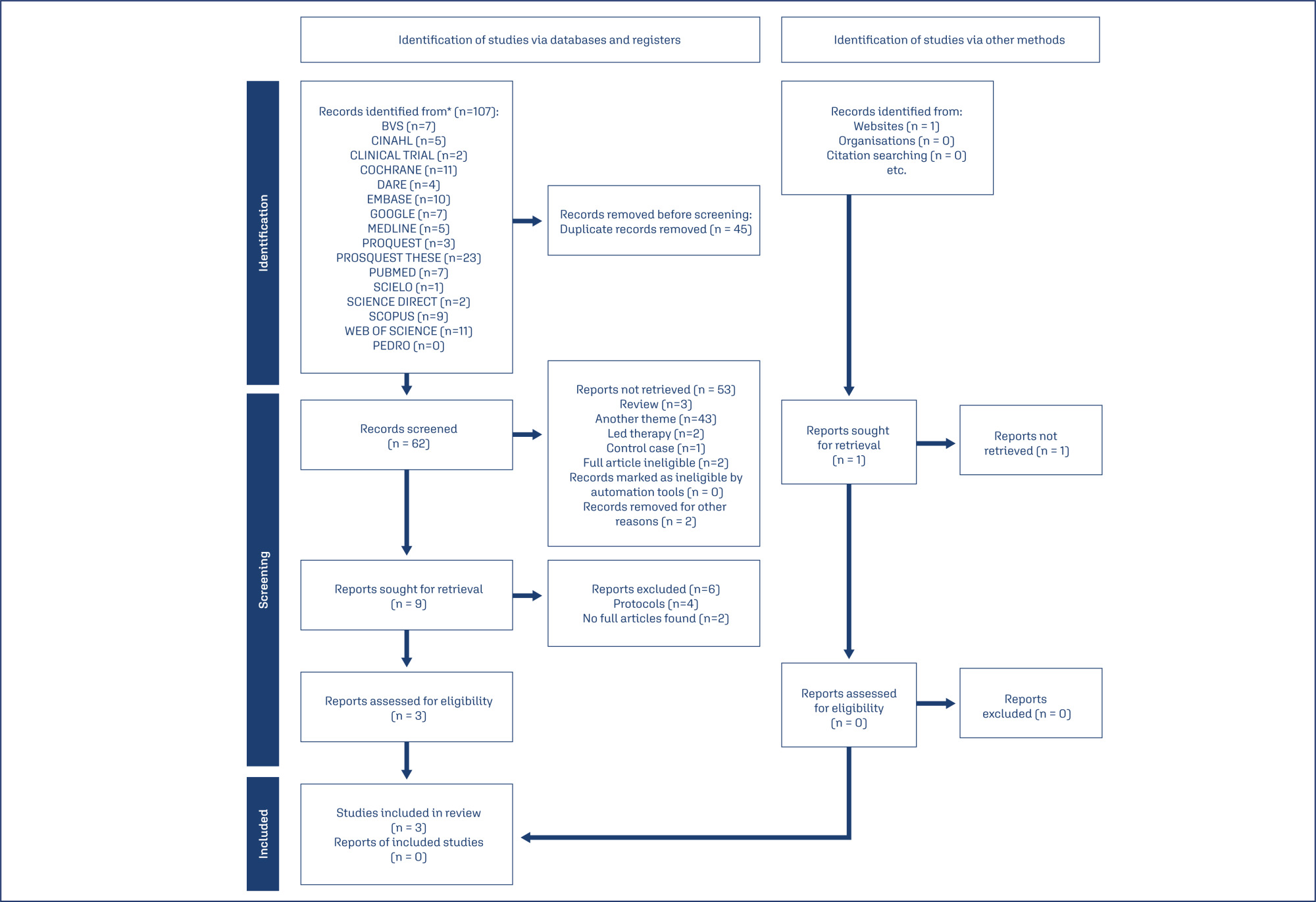Summary
Revista Brasileira de Ginecologia e Obstetrícia. 2025;47:e-rbgo3
03-18-2025
This study aimed to investigate the effect of low-level laser therapy (LLLT) on nipple trauma and pain during breastfeeding through a systematic review with a meta-analysis of selected studies.
A thorough search was conducted on March 22, 2022, using the databases PubMed, SciELO, LILACS, PEDro, CINAHL, EMBASE, ScienceDirect, Scopus, Google Scholar, MEDLINE, the Cochrane Library, Clinical Trials, Web of Science, TRIP, DARE, and ProQuest. The search terms included various combinations of low-level laser therapy, nipple pain, nipple trauma, and breastfeeding.
Out of 107 articles identified, only three controlled and randomized clinical trials was included. The extracted data encompassed breast and trauma characteristics, treatment types, outcomes (pain and healing process), evaluation tools, LLLT usage, laser brand, and parameters.
Data extraction was performed using RAYYAN for systematic reviews. The risk of bias in the studies was evaluated.
Pain was measured using the visual analog scale (VAS). The included studies did not use validated tools for assessing physical conditions. All studies employed LLLT with a 660-nm wavelength, though there were variations in equipment power, energy dose, and application methods. The meta-analysis revealed an average difference of −0.60 points (95% CI: −1.52 to 0.31) in the VAS pain scores between the LLLT and control groups. No heterogeneity was observed among the studies (I2=0%), indicating no significant difference in pain relief between LLLT (red light) and control groups.
LLLT may offer a promising option for managing breastfeeding-related complications, though further research is required.

Summary
Revista Brasileira de Ginecologia e Obstetrícia. 2012;34(1):28-33
02-17-2012
DOI 10.1590/S0100-72032012000100006
PURPOSE: To describe the characteristics of mothers and children and to evaluate the factors associated with discontinuation of exclusive breastfeeding. METHODS: A cross-sectional study on infants under six months of age who attended the vaccination campaign in 2008. In the sample design, vaccination units were selected by drawing lots and infants were similarly selected later at each unit systematically. A semi-structured instrument was used for data collection, containing questions about children's nutrition and socio-demographic characteristics. We used Odds Ratio and the χ² test for data analysis, accepting as the critical level p<0.05. RESULTS: The prevalence of breastfeeding for infants under 120 and 180 days of age was 89.5 and 85% respectively, and exclusive breastfeeding was 50.6 and 39.7% for infants less than 120 and 180 days of age, respectively. The factors most related to the abandonment of exclusive breastfeeding in infants under six months were maternal employment outside the home (OR=2.73; 95%CI=1.74-4.29) and use of pacifiers (OR=4.26; 95%CI=2.85-6.38). The mother being multiparous (OR=0.57; 95%CI=0.40-0.81) and receiving postpartum care in the public health care network (OR=0.55; 95%CI=0.39-0.79) represented protective factors against the practice of early cessation of breastfeeding. CONCLUSIONS: The prevalence of breastfeeding and exclusive breastfeeding in the municipality of Uberlândia is among the highest in the country and the factors most often associated with the practice of early weaning were maternal employment outside the home, offering pacifiers to the infants, receiving postpartum care in the private health sector, and primiparity.